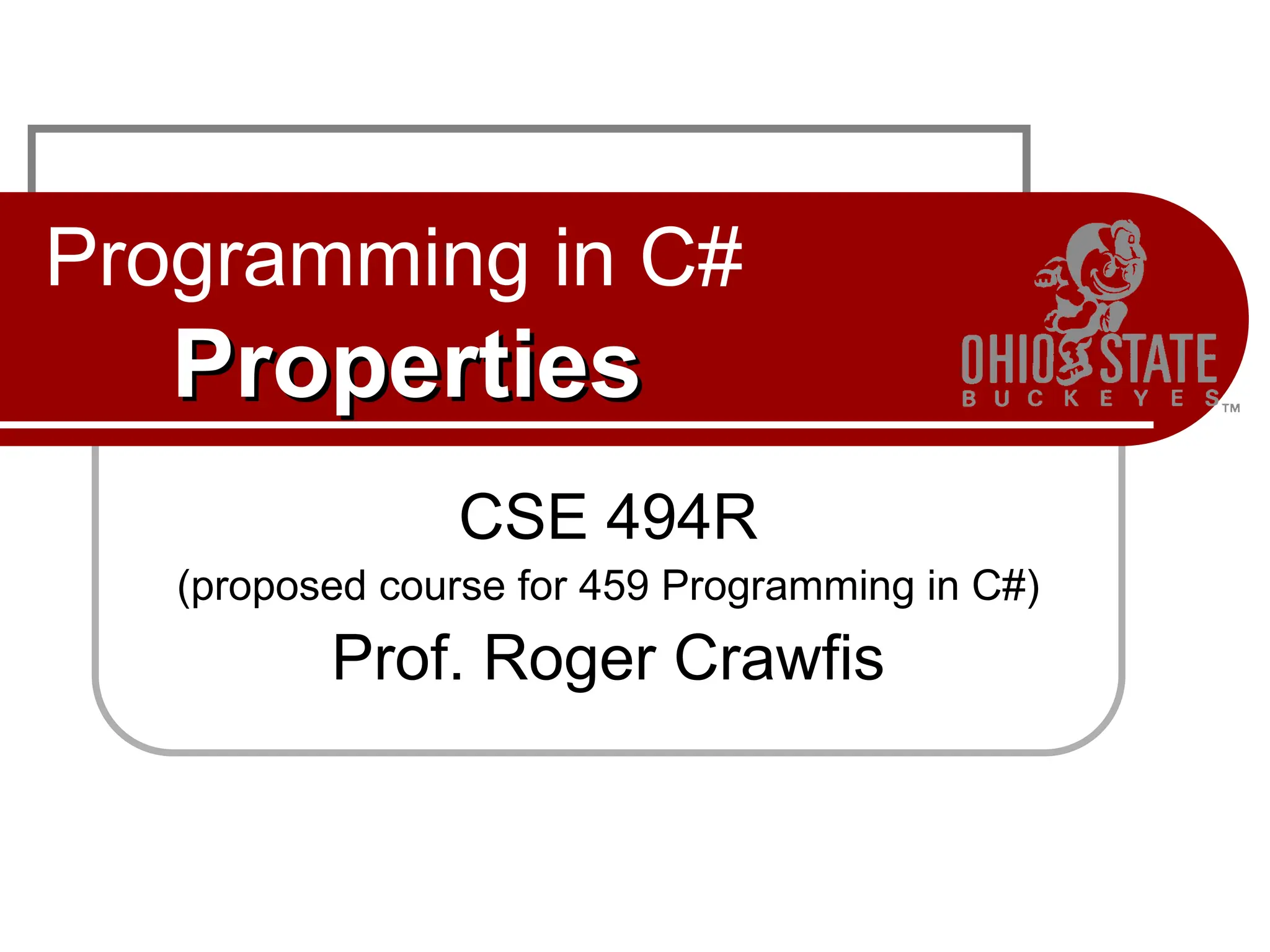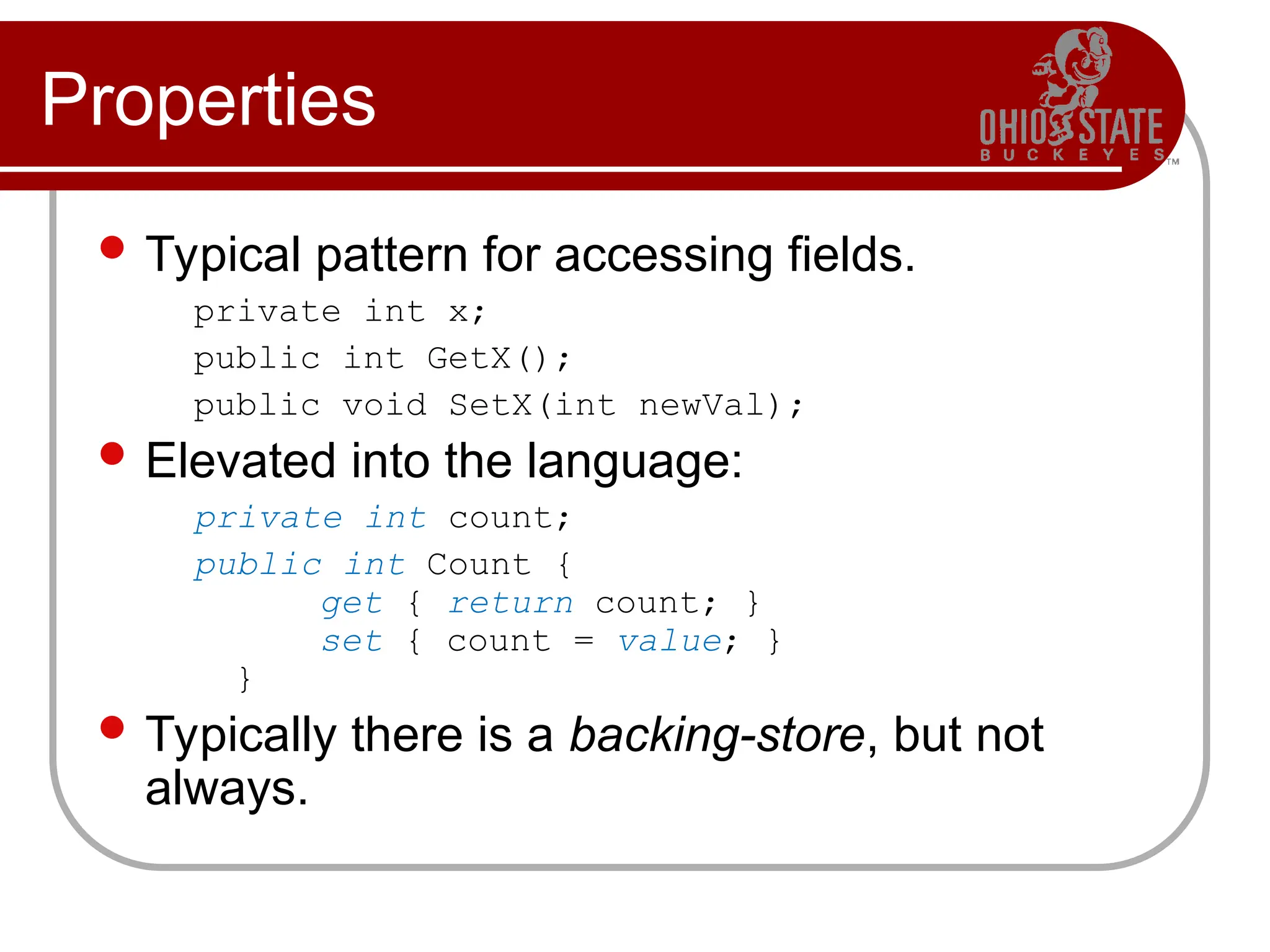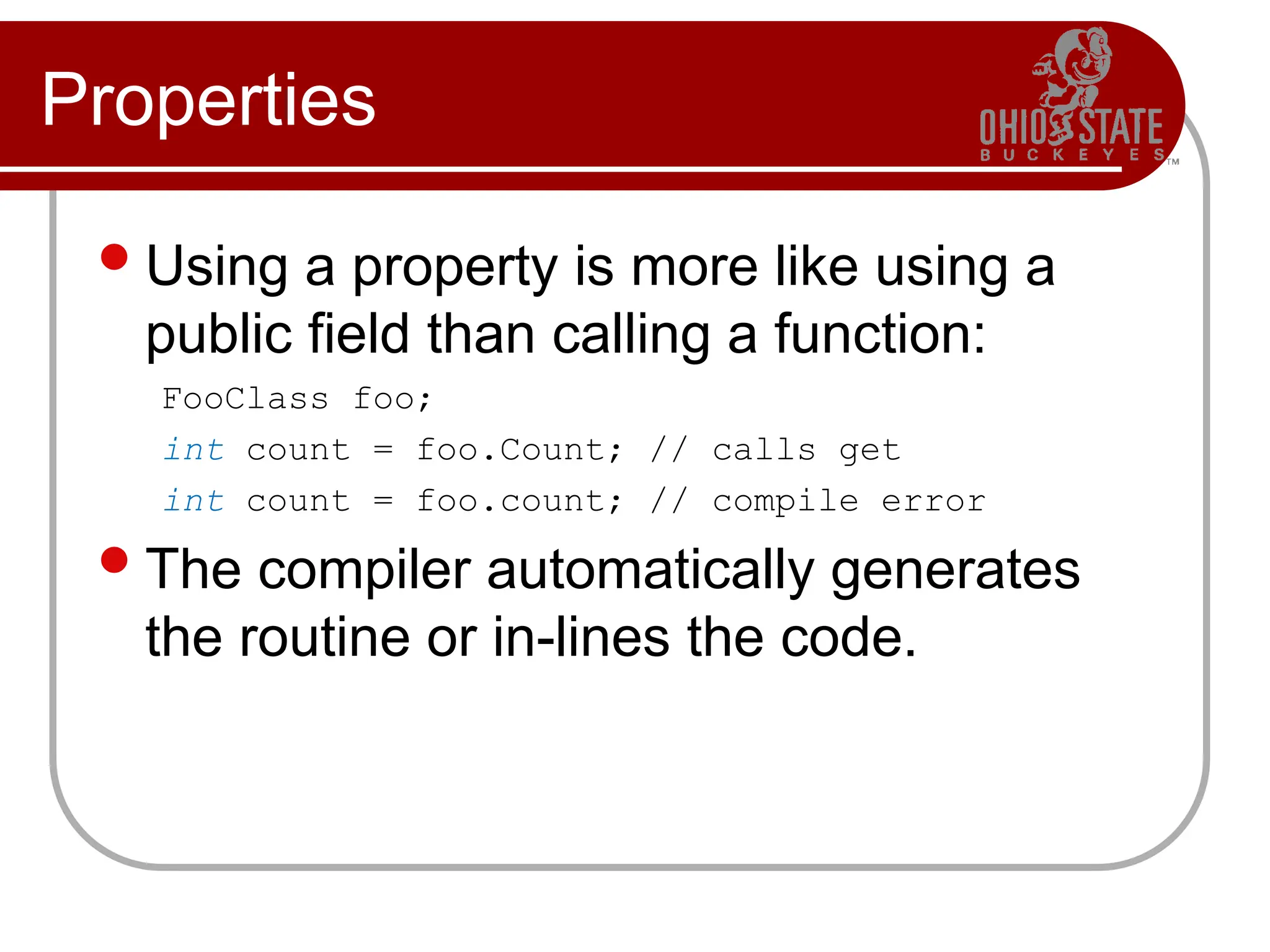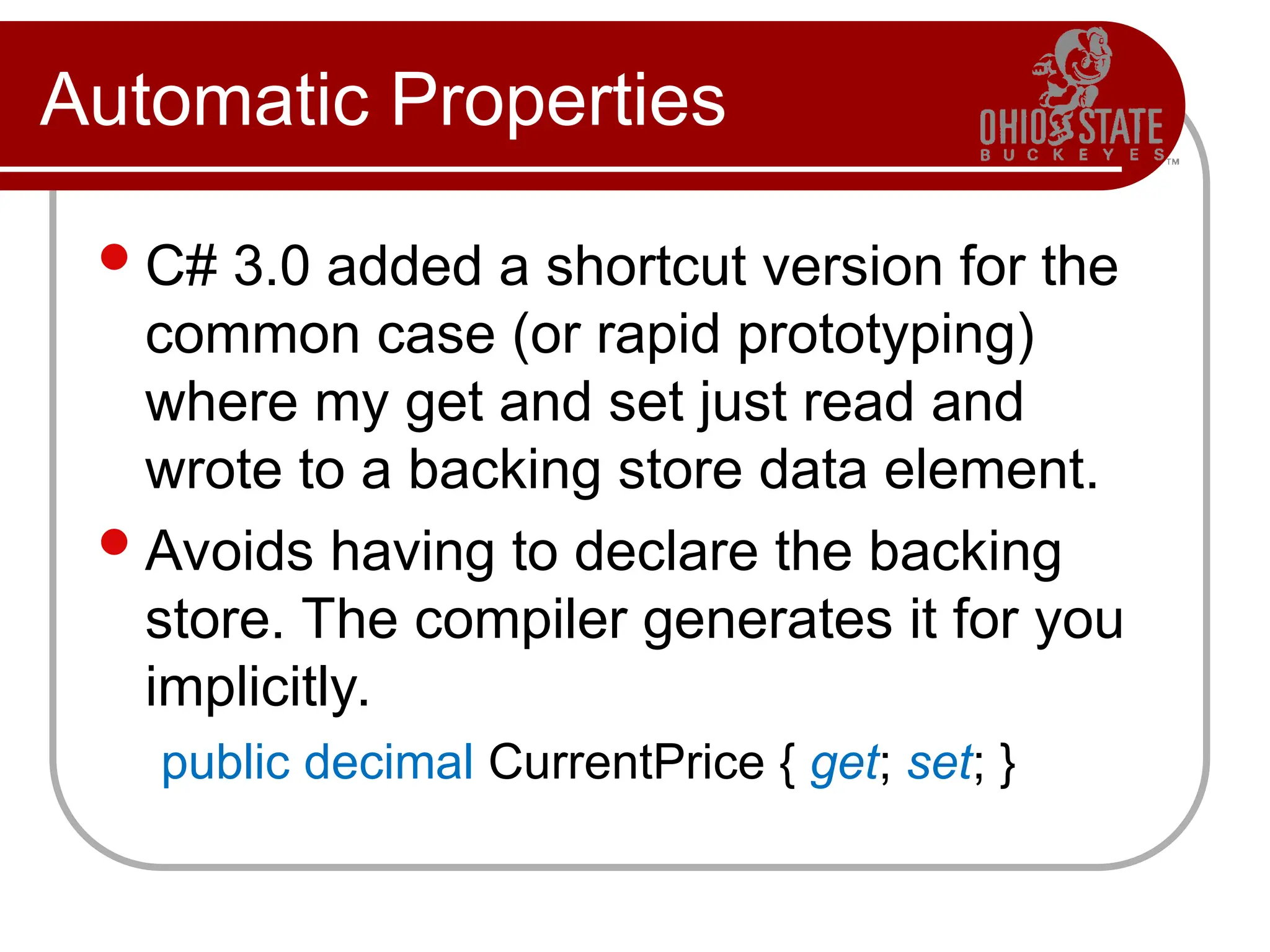The document discusses properties in C# programming, highlighting their typical usage pattern and the distinction between using properties and functions. It explains read-write, read-only, and write-only properties, and mentions the introduction of automatic properties in C# 3.0 that simplify property declarations by automatically generating the backing store. Additionally, it notes the relevance of properties in interfaces and their importance in WPF and declarative programming.




